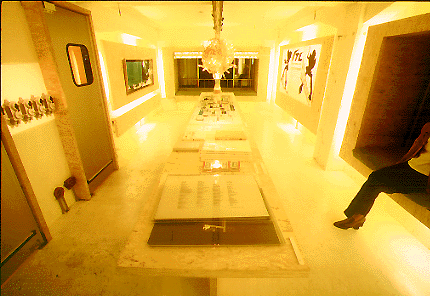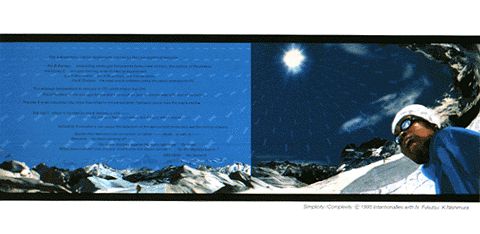INTENTIONALLIES

Definition of Intentionallies
Art Laboratory Rocket Opening Exhibition at Jingumae, Shibuya, Tokyo
Usually, books on architecture feature photos taken right after when it’s completed, when no one has ever lived there yet.
E: Time exsists in many ways. Those photos have nothing to do with compeletion of a building. This house has been enlarged in order to make it have diverse aspects. That can add an another diversity of time to my house, which intentionallies aims at. Good places are not always brand-new, but long-lived and tend to be rather old, keeping a good mixture of both new and old architectural context.
You’ve been following the context.
T: Yes, in any aspects in the universe, there’s a series of contexts.
Can you tell me about the idea of “label”? Why do you choose the word, “label”?
T: We’d like it to be something like a black box. You would never know what comes out of it. I mean, you can buy a CD judging by a record label. We want Intentionallies to be just like that.
So, you are working as a label, rather than a unit.
T: We are not always working as three pieces. It just happened to be three of us who set up our company. We do collaborate with other artists very often. This house was built up by a mason who collaborated with us. I think what is very architectural is that how architects can sort of edit each ability of good artists.
We don’t really stress on the label. We use the word because label is just suitable for us.

Simplicity/Complexity © 1995 Intentionalies with N.Fukutsu, K.Nishimura
I’d like to ask you about your involvement with the urban space. By just placing a skier on the summit of a snowy mountain, it can generate an image of a ski gound. For ITL, architecture is almost like the skier forming a part of the topography. I think it’s a very good idea. In a word, it can be said that it’s “a concept of involvement”. How do you put that?
E: I wouldn’t say all our circumstances should be changed at once. For example, by placing strategically designed sites in a city, they eventually permeate through the area and urge their circumstances to be altered. We want to elaborate this whole process. Although it’s not easy for any big cities to be transformed over night, I think there’s always a possibility that triggers a drastic change.
Do you usually intend to kind of conceal a triggering device when constructing a building?
ITL: It depends on the site.
E: Eventually, it’s all how to deal with the whole circumstances after all. It’s just quite natural.
O: I guess it’s nonsense how much you try to understand what the city is. The other day, I worked as a adviser at an academic society where the theme was on urban cities. Every idea suggested by a panel of experts seemed to be rather pointless. Matters concerning urban design are so diverse and profound that they can’t really handle.
T: Constructing a city is different from constructing a building. We don’t deal with the urban renewal but the urban “contexts” such as configuration of the ground, the nature of the soil, budget, owner’s intention etc…
For me, those contexts are exactly a chance to get involved with the city. There has been thousands of buildings that have lost contexts with the surroundings in Japan. I think it’s important for us to create buildings that keep good contexts with the surroundings.
ITL: You’re right there.
E: In other word, that’s what our lifestyle is.
ITL: Exactly (laugh)
Read more ...





